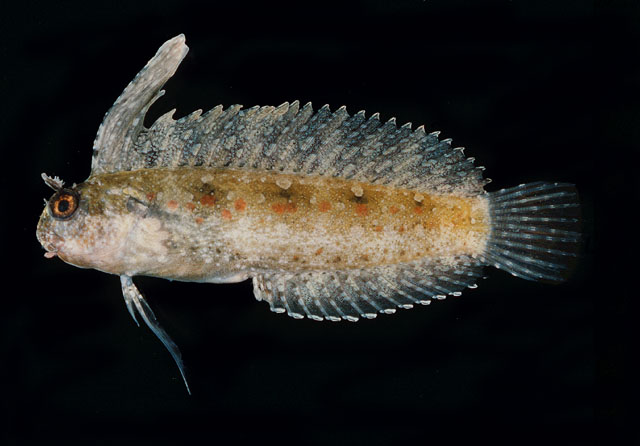| Blenniidae (Combtooth blennies), subfamily: Blenniinae |
| 8.5 cm TL (male/unsexed) |
|
reef-associated; marine; depth range 0 - 8 m |
| Indo-Pacific: Red Sea and East Africa to the Phoenix, Samoan and Tongan islands, north to Ryukyu Islands, south to Australia and New Caledonia. |
|
Dorsal spines (total): 10-11; Dorsal soft rays (total): 14-17; Anal spines: 2-2; Anal soft rays: 14-14. Head and body speckled and mottled; 5-6 indistinct, dark blotches or bands on body usually with dark-edged ocelli above (Ref. 4404). First three rays of dorsal fin are elevated. |
| Adults are found solitary or in small groups (Ref. 90102) in shallow protected lagoons and reef flats with algal and seagrass clumps. Juveniles often in floating Sargassum weeds and maybe dispersed over great distances (Ref. 48636). They swim with the tail oriented vertically. Oviparous. Eggs are demersal and adhesive (Ref. 205), and are attached to the substrate via a filamentous, adhesive pad or pedestal (Ref. 94114). Empty mollusk shells are used for nesting. Larvae are planktonic, often found in shallow, coastal waters (Ref. 94114). Captured at the surface using a hand net (Ref. 26165). |
|
Least Concern (LC); Date assessed: 25 March 2009 Ref. (130435)
|
| harmless |
Source and more info: www.fishbase.org. For personal, classroom, and other internal use only. Not for publication.
